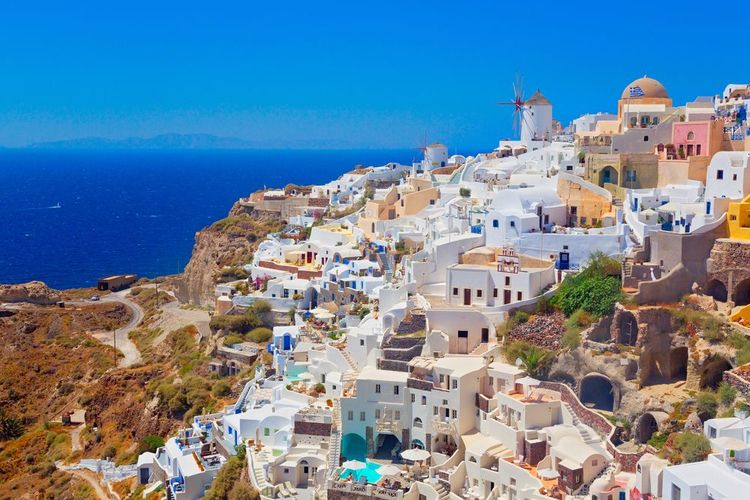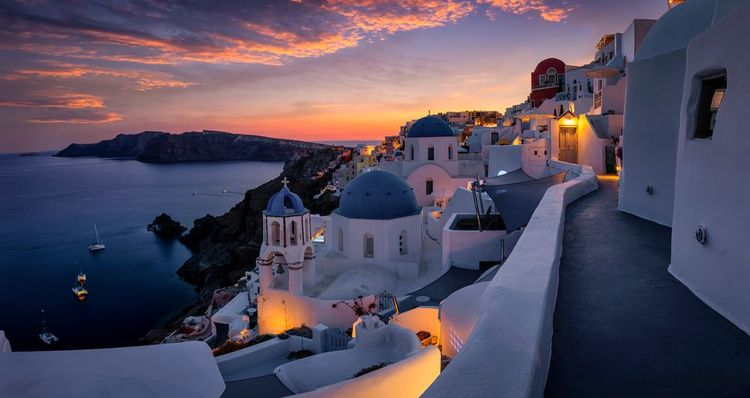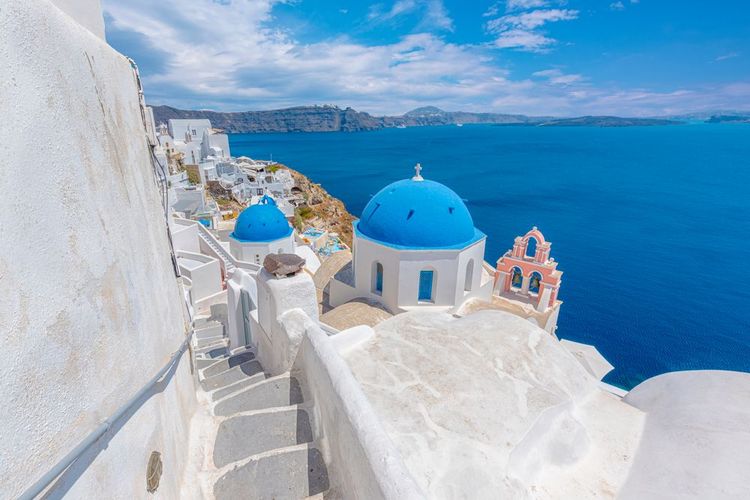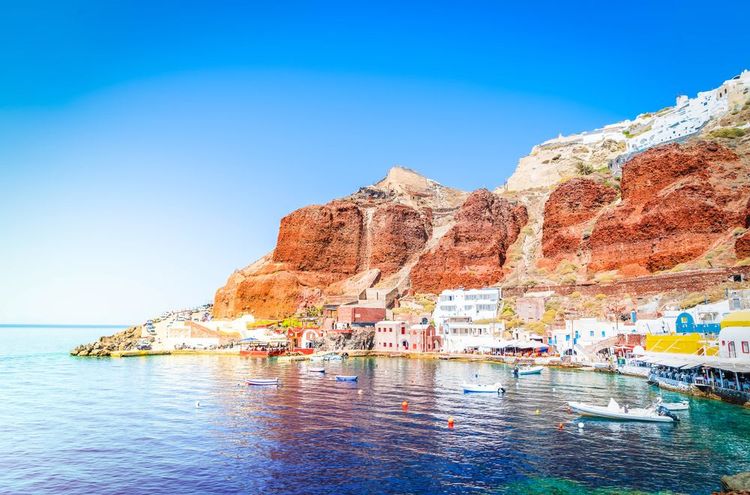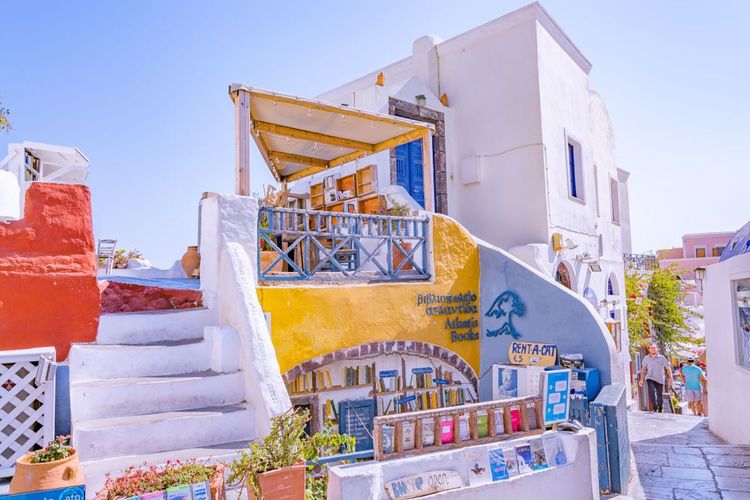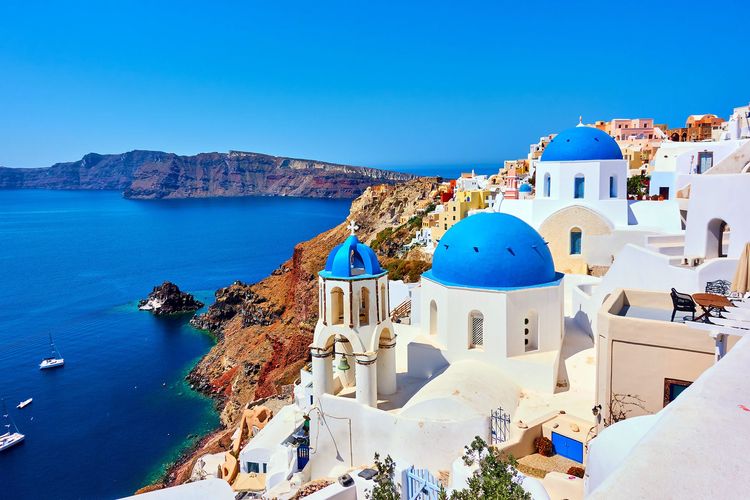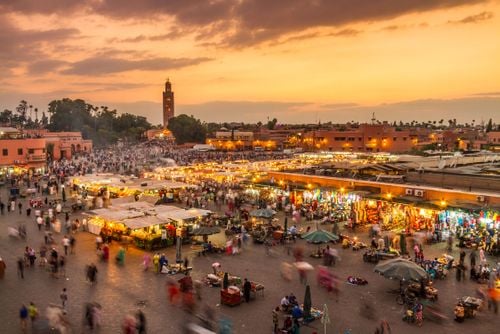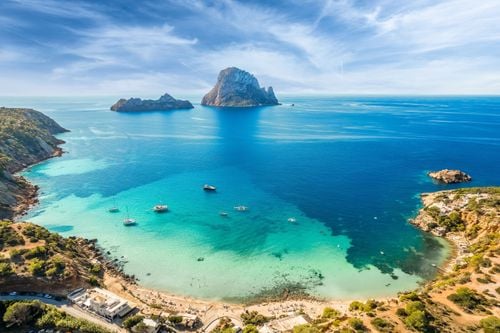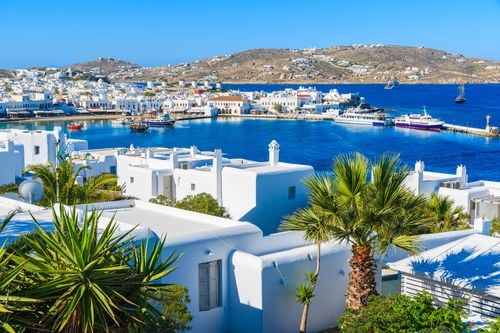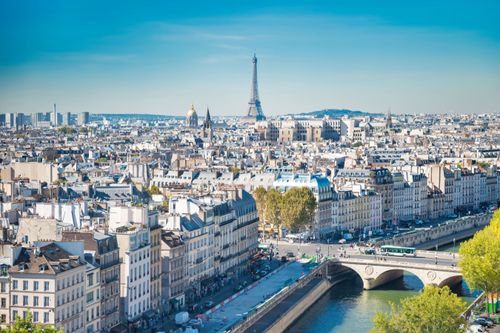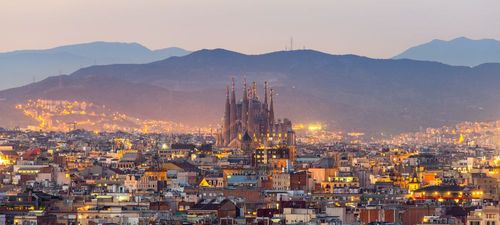👉 How do you pronounce and spell "Oia"?
Oia corresponds to the name of the village in Greek, which in Latin is written Ia: you will regularly find both spellings. Above all, avoid pronouncing it "O-ia", a typical tourist mistake!
👉 When should you come to Oia?
The crowds at sunset can scare off agoraphobes... who prefer to go to Oia very early in the morning: incredible light, deserted streets, in a word, magnificent! In the evening, Oia regains its calm, and the illuminated villages of the Caldera are always a sight to behold.
By car, be wary of leaving the village just after sunset: between the tour buses and the private minibuses, there's a lot of traffic...
👉 What can you see in Oia?
- The labyrinthine streets and views of the Caldera
- Don't miss a tour of the ruins of the Venetian kastro
- The Oia windmill, a symbol of Santorini, and views of the Cyclades
- The small port of Ammoudi and its steps
- In the church of Panagia, rarely open to the public, a beautiful miraculous icon of the Virgin Mary, said to have been found directly in the Caldera!
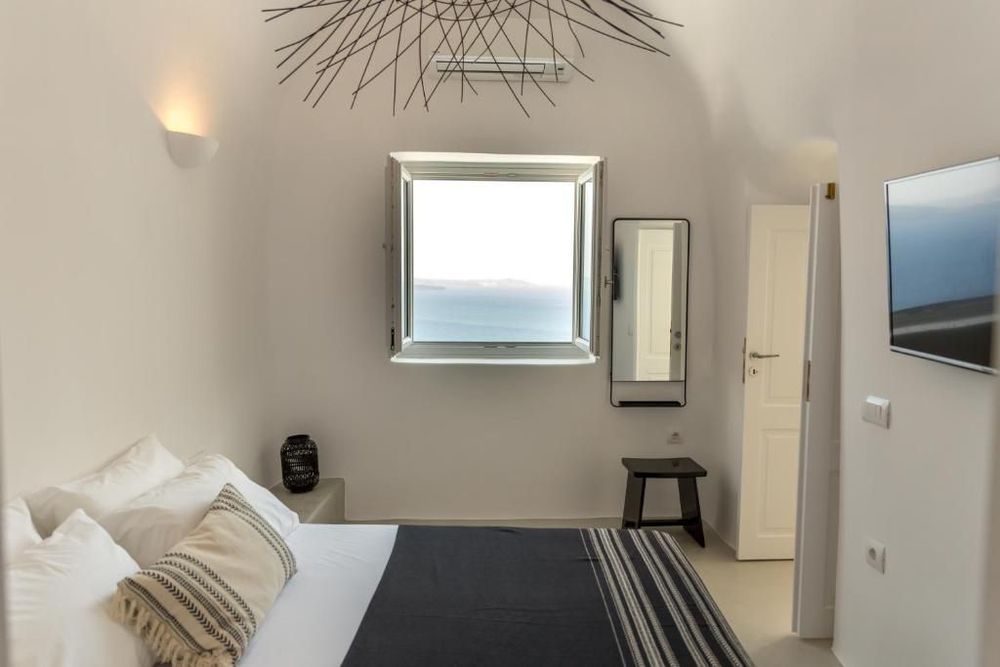 Santorini
Santorini
